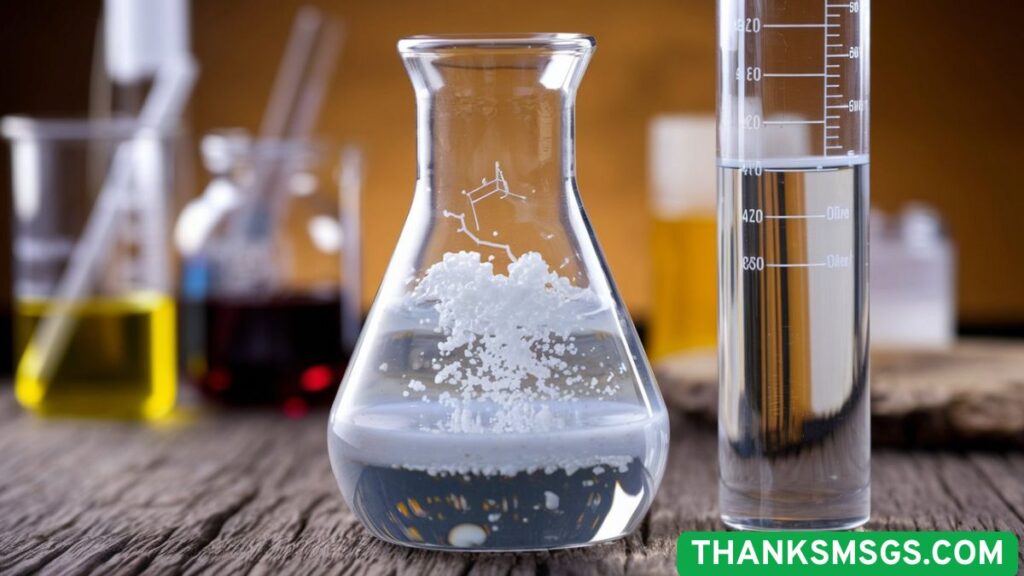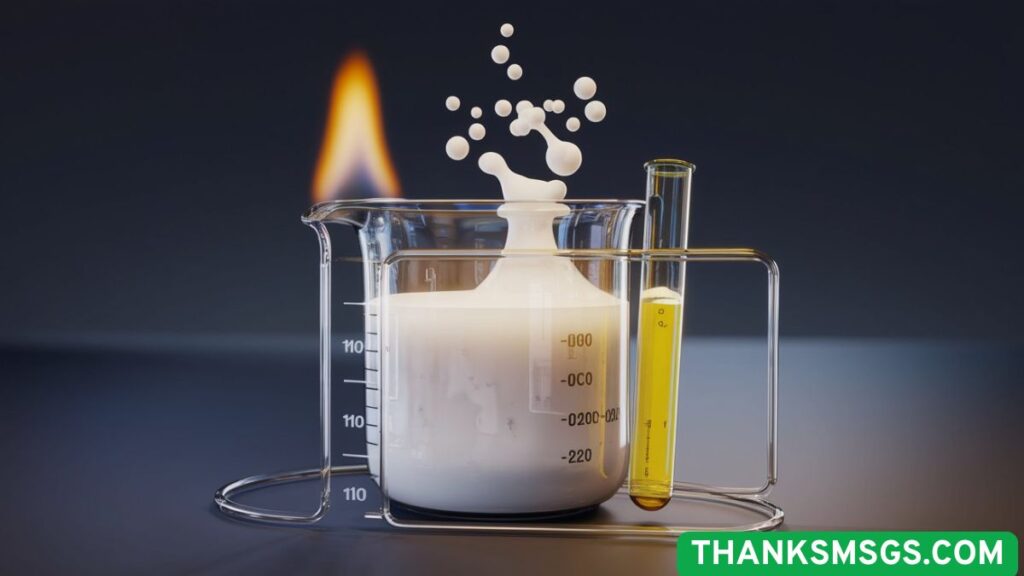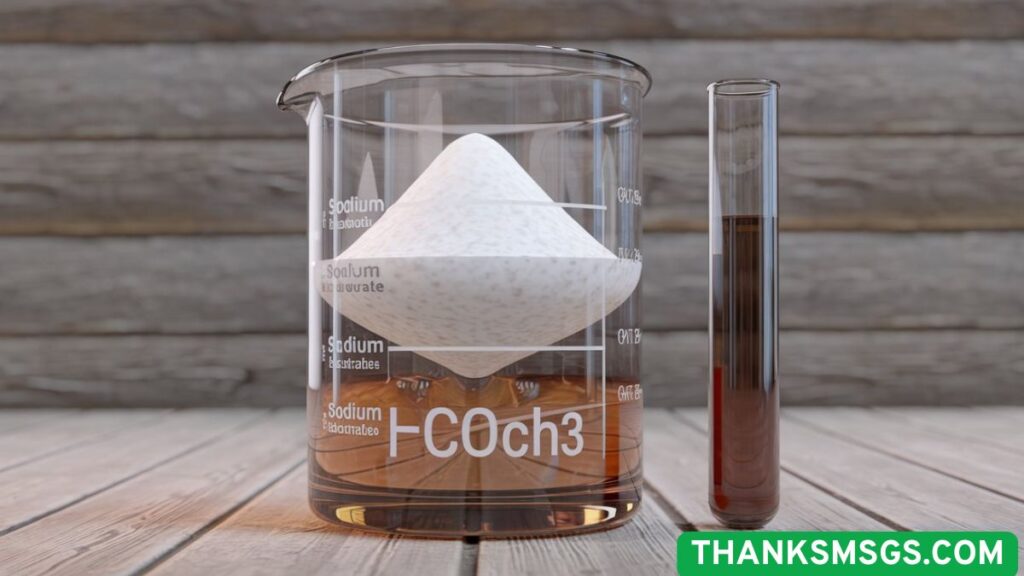Ester hydrolysis of HCOOCH₃ means breaking down the ester called methyl formate using water. This process splits the molecule into formic acid and methanol. It is a common chemical reaction in labs and nature.
Did you know this reaction happens in many things around us? It helps make useful chemicals and even plays a part in digestion. Learning about it can make chemistry more fun and clear.
When water reacts with HCOOCH₃, it breaks a special bond called an ester bond. Sometimes acids or bases help this reaction happen faster. This reaction is important for making medicines and cleaning products.
Understanding the Hydrolysis of HCOOCH₃ with H₂O and CH₂ Reaction Pathways
- Hydrolysis breaks ester bonds by adding water.
- HCOOCH₃ is a simple ester called methyl formate.
- Water molecules attack the carbonyl carbon in HCOOCH₃.
- CH₂ plays a role in stabilizing the reaction intermediates.
- The reaction produces formic acid and methanol.
- Acid or base catalysts speed up the hydrolysis process.
- Hydrolysis is common in both nature and industry.
- The carbon-oxygen bond in HCOOCH₃ breaks during the reaction.
- Reaction pathways show step-by-step molecular changes.
- Understanding pathways helps improve chemical reactions.
- Water’s polarity helps it interact with HCOOCH₃.
- CH₂ groups affect how easily the ester reacts.
- Hydrolysis can be reversible under certain conditions.
- Studying hydrolysis helps in making biodegradable plastics.
- This reaction is key for many biological systems.
Breaking Down HCOOCH₃: The Role of CH₂ and H₂O in Ester Reactions
- CH₂ is part of the ester’s molecular structure.
- Water molecules (H₂O) help split the ester bond.
- CH₂ groups influence the reaction speed.
- HCOOCH₃ reacts with H₂O to form simpler molecules.
- The ester bond is broken to create alcohol and acid.
- Water adds hydroxide and hydrogen during hydrolysis.
- CH₂ may stabilize reaction intermediates.
- This reaction is important in chemical manufacturing.
- Understanding these roles improves reaction control.
- Ester breakdown is a common chemical process.
- CH₂’s electron effects help shape the reaction path.
- H₂O is the key molecule for hydrolysis reactions.
- The reaction is used in producing biofuels.
- Chemists study CH₂ and H₂O to optimize yields.
- Breaking esters helps recycle organic compounds
HCOOCH₃ Meets CH₂ and H₂O: A Closer Look at Ester Hydrolysis

- Hydrolysis starts when HCOOCH₃ meets water.
- CH₂ affects how the molecule reacts chemically.
- Water attacks the ester’s carbonyl carbon.
- The bond between carbon and oxygen breaks.
- Methanol and formic acid are the reaction products.
- The reaction is faster with catalysts like acid or base.
- CH₂ stabilizes intermediates during the reaction steps.
- Water acts as a “scissors” cutting the ester bond.
- This reaction is essential for many industrial processes.
- Hydrolysis can be reversible depending on conditions.
- Understanding this reaction helps design better chemicals.
- Water molecules are key players in ester breakdown.
- The presence of CH₂ affects reaction rates.
- Hydrolysis is a foundation of organic chemistry.
- Studying this helps in making medicines and plastics.
Chemical Interactions Between HCOOCH₃, CH₂, and Water (H₂O)
- HCOOCH₃ interacts with water to start hydrolysis.
- CH₂ influences electron movement during the reaction.
- Water molecules form hydrogen bonds with the ester.
- Chemical bonds weaken as water attacks HCOOCH₃.
- CH₂ groups help stabilize reaction transition states.
- Ester bonds are susceptible to nucleophilic attack by water.
- The interaction breaks the ester into acid and alcohol.
- Water’s polarity makes it reactive in these processes.
- Chemical interactions are key to understanding reactivity.
- HCOOCH₃’s structure guides how the reaction proceeds.
- CH₂ helps balance charges in intermediate molecules.
- These interactions affect how fast the hydrolysis occurs.
- Catalysts can change the nature of these chemical interactions.
- This knowledge helps chemists control reactions better.
- Understanding interactions aids in chemical synthesis design.
Exploring the Reactivity of HCOOCH₃ with CH₂ and H₂O
- HCOOCH₃ is reactive due to its ester bond.
- CH₂ affects how electrons flow in the molecule.
- Water molecules are nucleophiles attacking esters.
- Reactivity depends on molecular environment and catalysts.
- HCOOCH₃ reacts faster in acidic or basic solutions.
- The ester bond breaks to form two simpler compounds.
- CH₂ groups influence reaction mechanisms and speed.
- Water participates by donating hydrogen and hydroxide ions.
- Studying reactivity helps develop new chemical methods.
- Temperature can increase HCOOCH₃’s reactivity.
- The molecule’s shape affects how water and CH₂ interact.
- Reactivity patterns help in predicting reaction outcomes.
- Ester hydrolysis is a classic example of chemical reactivity.
- Reactivity studies are important in green chemistry.
- Scientists use this knowledge to create useful materials.
HCOOCH₃ + H₂O + CH₂: Mechanism of a Simple Ester Reaction
- The reaction starts with water attacking the ester carbon.
- CH₂ helps stabilize intermediate molecules.
- A tetrahedral intermediate forms during the reaction.
- The ester bond is broken after intermediate formation.
- Methanol and formic acid are formed as products.
- Catalysts speed up each step of the mechanism.
- Water acts as a nucleophile in the mechanism.
- Proton transfers help stabilize charged intermediates.
- The reaction is stepwise with distinct phases.
- CH₂ groups influence the energy of intermediates.
- Understanding the mechanism allows better reaction control.
- The ester’s carbonyl group is key to the mechanism.
- The mechanism is reversible under some conditions.
- Mechanism studies help improve industrial processes.
- This mechanism is a fundamental organic chemistry example.
Ester Chemistry Simplified: HCOOCH₃ Reacts with CH₂ and H₂O
- Ester bonds link carbon and oxygen atoms.
- HCOOCH₃ is a simple ester called methyl formate.
- Water breaks the ester bond in hydrolysis.
- CH₂ groups influence the reaction’s ease and path.
- The reaction produces methanol and formic acid.
- Acid or base catalysts speed up the process.
- Hydrolysis is important in everyday chemistry.
- Understanding ester reactions helps in medicine creation.
- Water molecules add to the ester in hydrolysis.
- CH₂ groups affect electron flow during the reaction.
- This reaction is used to recycle chemicals.
- The process changes complex molecules into simpler ones.
- Hydrolysis reactions are common in labs and industry.
- Esters have a fruity smell and are used in flavors.
- Learning ester chemistry helps explain many natural processes.
Hydrolysis Reaction of HCOOCH₃ in the Presence of CH₂ and H₂O

- Hydrolysis splits HCOOCH₃ into smaller molecules.
- Water molecules attack the ester’s carbonyl carbon.
- CH₂ groups affect the stability of reaction intermediates.
- Acid or base can speed up hydrolysis.
- The reaction produces formic acid and methanol.
- Hydrolysis involves breaking and forming chemical bonds.
- The ester’s structure influences hydrolysis speed.
- Water acts as a nucleophile in the reaction.
- CH₂ groups help balance charges during reaction steps.
- Temperature can increase reaction speed.
- Hydrolysis is a reversible reaction under some conditions.
- This reaction is important in natural biological processes.
- Hydrolysis helps break down esters in the environment.
- Studying this reaction improves green chemical methods.
- Hydrolysis is a basic but vital organic reaction.
Read Also: fhogis930.5z: Transforming Innovation in the Digital Age
From HCOOCH₃ to Simpler Compounds: How CH₂ and H₂O Act Together
- HCOOCH₃ breaks down into methanol and formic acid.
- Water molecules provide hydrogen and hydroxide ions.
- CH₂ groups influence electron movement during breakdown.
- Hydrolysis requires water molecules to “cut” the ester bond.
- CH₂ stabilizes reaction intermediates.
- Water and CH₂ work together for efficient hydrolysis.
- Temperature and catalysts affect how fast breakdown happens.
- This reaction is key in organic chemistry and biology.
- Breaking esters helps in recycling and creating new materials.
- Water’s polarity helps it interact with the ester.
- CH₂ groups are important for reaction stability.
- Hydrolysis transforms complex molecules into simpler ones.
- Understanding these interactions improves chemical synthesis.
- The reaction helps explain natural decay and digestion.
- Water and CH₂ teamwork shows the beauty of chemistry.
HCOOCH₃ Breakdown: A Study of CH₂ and H₂O as Reactants
- CH₂ and H₂O are key players in breaking down HCOOCH₃.
- Water attacks the ester to start the reaction.
- CH₂ helps stabilize the molecules during breakdown.
- Hydrolysis produces methanol and formic acid.
- The reaction involves bond breaking and forming.
- Catalysts can make the reaction happen faster.
- Understanding this helps design better chemical reactions.
- Water’s polarity is essential for the reaction.
- CH₂ groups influence the reaction pathway.
- Hydrolysis is reversible under certain conditions.
- Studying this helps develop eco-friendly chemistry.
- Ester breakdown is important in many industries.
- The reaction is common in labs and nature.
- The process transforms esters into useful products.
- CH₂ and H₂O together create effective hydrolysis.
Analyzing the Reaction: HCOOCH₃ + CH₂ + H₂O Explained
- The reaction starts with water attacking HCOOCH₃.
- CH₂ stabilizes reaction intermediates.
- The ester bond breaks during the reaction.
- Methanol and formic acid form as final products.
- Reaction speed depends on temperature and catalysts.
- Water acts as a nucleophile in the process.
- CH₂ helps balance charge in the molecule.
- The reaction is stepwise and reversible.
- Understanding steps helps improve industrial uses.
- Hydrolysis is important in organic chemistry education.
- This reaction model helps explain ester behaviors.
- The ester carbonyl group is the reaction center.
- Proton transfers are part of the mechanism.
- Water and CH₂ work together during the reaction.
- Analyzing this reaction helps design better catalysts.
The Role of CH₂ and H₂O in the Decomposition of HCOOCH₃
- CH₂ stabilizes intermediates in HCOOCH₃ decomposition.
- Water attacks the ester to begin breaking it down.
- The ester bond is cleaved during decomposition.
- Methanol and formic acid are products of the reaction.
- The reaction involves nucleophilic attack by water.
- CH₂ influences electron distribution in the molecule.
- Temperature and catalysts affect decomposition rate.
- Understanding roles helps control the reaction.
- Hydrolysis is key to decomposing esters naturally.
- Water’s polarity helps it react with HCOOCH₃.
- CH₂ groups affect the energy of transition states.
- The reaction can be reversed under some conditions.
- This reaction is essential for many industrial processes.
- Decomposition is a fundamental step in organic chemistry.
- Knowing these roles aids in designing green reactions.
Read Also : “Project dh58goh9.7: System Reboot”
HCOOCH₃ and Its Behavior with CH₂ and H₂O in Organic Chemistry
- HCOOCH₃ reacts with water in ester hydrolysis.
- CH₂ groups affect the molecule’s behavior.
- Hydrolysis breaks down HCOOCH₃ into simpler compounds.
- The reaction is key to many chemical processes.
- Water acts as a nucleophile in this reaction.
- CH₂ influences electron movement and reaction rate.
- Understanding this helps create useful chemicals.
- The reaction speed changes with temperature and pH.
- Hydrolysis of HCOOCH₃ is reversible.
- Ester behavior is a core topic in organic chemistry.
- Water and CH₂ interaction changes reaction pathways.
- Catalysts speed up this important reaction.
- The process is common in both labs and nature.
- HCOOCH₃’s behavior guides drug and material design.
- Studying it advances knowledge in green chemistry.
Step-by-Step Reaction of HCOOCH₃ with CH₂ and Water Molecules

- Water attacks the carbonyl carbon of HCOOCH₃ first.
- A tetrahedral intermediate forms after the attack.
- CH₂ groups stabilize this intermediate.
- The ester bond breaks, releasing products.
- Methanol and formic acid are formed.
- Proton transfer occurs to balance charges.
- Catalysts can speed up each step.
- The reaction is reversible under some conditions.
- Each step can be studied to improve reactions.
- Water acts as the nucleophile in the mechanism.
- CH₂ groups affect intermediate stability.
- This stepwise process is typical of ester hydrolysis.
- Temperature influences reaction speed.
- The reaction follows organic chemistry principles.
- Understanding each step helps design better catalysts.
Unveiling the Chemistry: HCOOCH₃, CH₂, and H₂O in Action
- HCOOCH₃ reacts with water to start hydrolysis.
- CH₂ groups help stabilize reaction intermediates.
- Water breaks the ester bond to form simpler molecules.
- Methanol and formic acid are common products.
- Catalysts increase the reaction rate.
- The reaction is important in many industries.
- Water acts as a nucleophile attacking the ester.
- CH₂ influences the reaction energy landscape.
- The process is reversible in some environments.
- This chemistry is foundational in organic reactions.
- Understanding it helps improve green chemistry.
- HCOOCH₃ hydrolysis is a model reaction.
- Water and CH₂ work together for effective reaction.
- Studying this reveals key reaction mechanisms.
- Chemistry unfolds in fascinating ways here.
Conclusion
Ester hydrolysis of HCOOCH₃ is a simple but important chemical reaction. In this process, water breaks the ester bond in methyl formate. This reaction changes the ester into two smaller parts called formic acid and methanol. Scientists study this reaction to understand how chemicals change and to make useful products. Ester hydrolysis of HCOOCH₃ helps in making medicines, cleaning agents, and many everyday items.
This reaction also shows how water can help break down complex molecules. Knowing how ester hydrolysis of HCOOCH₃ works helps students learn important chemistry ideas. The process is a good example of how molecules change in nature and labs. Understanding this reaction can help people solve problems in science and make better products for the future.



